Art World
8 Intellectually Stimulating Masterpieces to Seek Out at TEFAF New York Fall 2017
From a vintage Egon Schiele to some stunning birds of prey, here's what we liked.
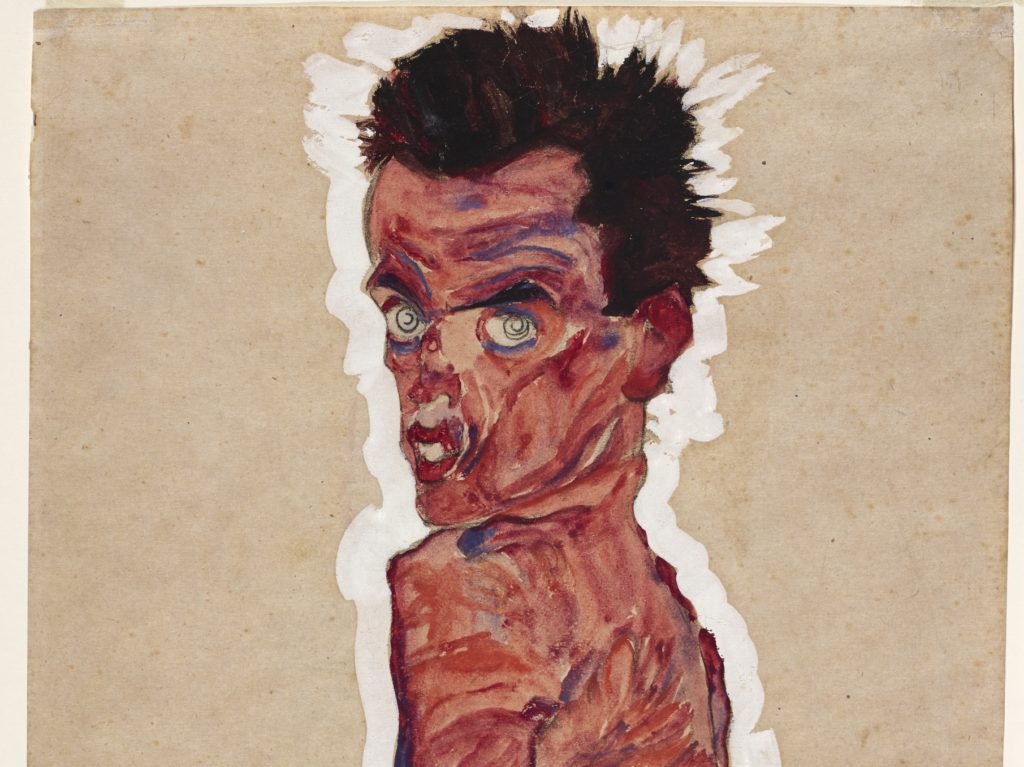
From a vintage Egon Schiele to some stunning birds of prey, here's what we liked.

Henri Neuendorf

For the second edition of TEFAF’s New York art fair, the Park Avenue Armory welcomes some 93 art and antiques dealers from around the world, who have brought with them a many-splendored trove of riches, from Baroque paintings to samurai swords to Ming vases. We toured the aisles to find out not only what were the best objects on view, but to learn the multilayered backstories that provide them with their ultra-sophisticated intellectual patinas. Here’s what we found.
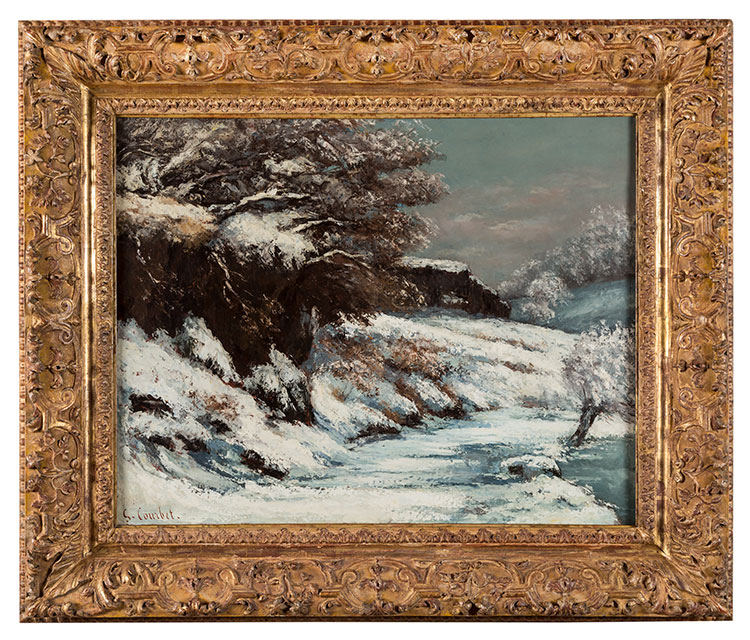
Gustave Courbet Effet de Neige (1866-68). Photo: courtesy of French & Company, New York.
ARTIST: Gustave Courbet
TITLE & DATE: Effet de Neige, ca. 1866-68
GALLERY: French & Company, New York
PROVENANCE: Claude Aubry, Paris
ASKING PRICE: $8 million
WHY IT’S GREAT: Undeterred by the almost complete absence of snow scenes in French painting, Gustave Courbet painted this icy landscape during an uncharacteristically cold winter between 1866-68, contravening convention and actively courting his reputation as the bad boy of French realism. This work is one of the finest examples of the 80-odd snow scenes by the artist, set apart by the absence of figures as well as Courbet’s aggressive, highly painterly and brushy style.
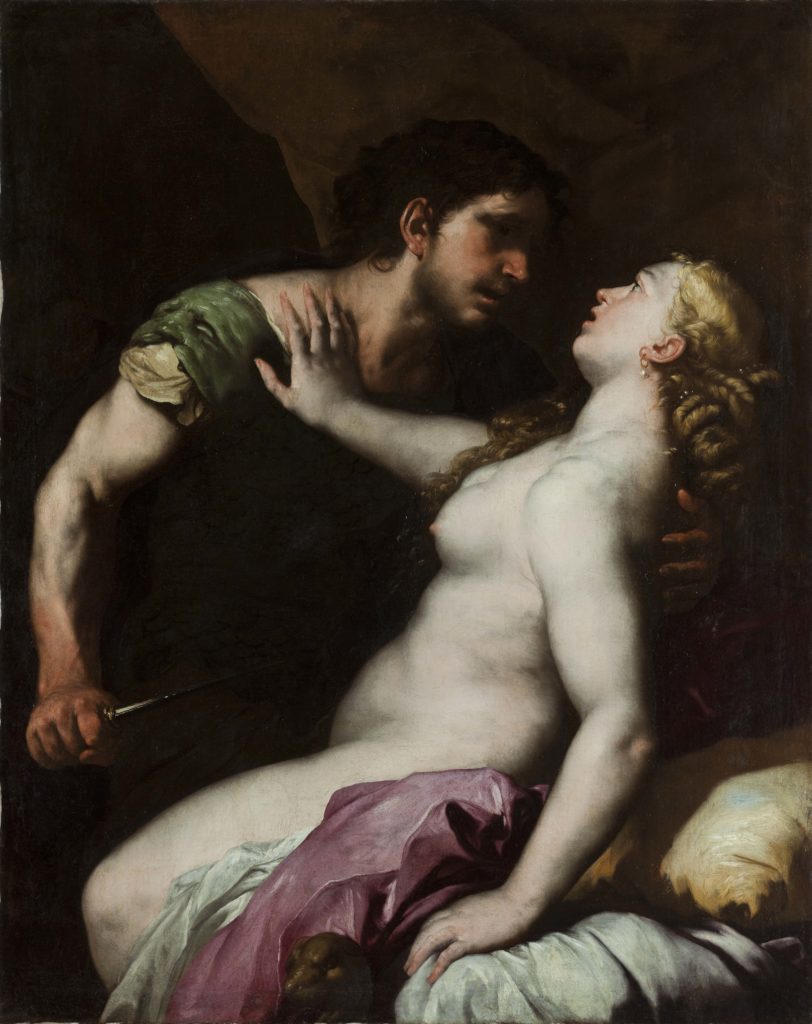
Luca Giordano Tarquin and Lucretia (ca. 1663). Photo: Galerie Canesso, Paris.
ARTIST: Luca Giordano
TITLE & DATE: Tarquin and Lucreti, ca. 1663
GALLERY: Galerie Canesso
PROVENANCE: Private collection, Italy
ASKING PRICE: $1.2 million
WHY IT’S GREAT: The Neapolitan painter’s take on the tale of Tarquin and Lucretia is truly one of the standout paintings at TEFAF. Tarquin, the son of the last king of the Etruscans, is shown making violent advances on Lucretia, who fatally stabbed herself, making her family promise to avenge her honor. The resulting rebellion against the tyrant Tarquin the Proud and his son led to their banishment from Rome and the proclamation of the Republic. The composition has precedent in Titian’s numerous versions of the scene. Giordano would have been aware of these, since he trained in Venice between 1650 and 1654.
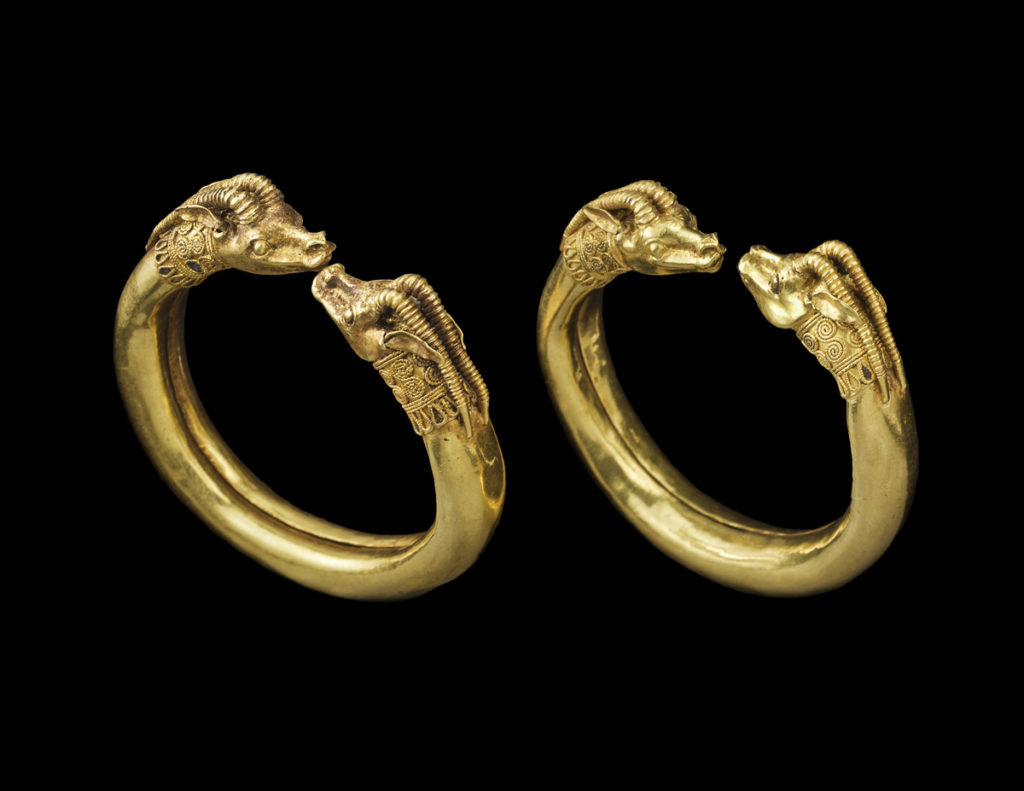
Ancient pair of gold bracelets (4th century Greece). Photo: Ariadne Galleries, New York.
ARTIST: Unknown
TITLE & DATE: Ancient pair of gold bracelets, 4th century AD
GALLERY: Ariadne Galleries, New York
PROVENANCE: Private collection, Britain
ASKING PRICE: $275,000
WHY IT’S GREAT: Indicative of the diversity of artifacts on offer at TEFAF, this pair of rare gold bracelets date to 4th century Greece and would have been worn by a wealthy or aristocratic Greek woman. The pair is an example of the highest level of gold craftsmanship, characterized by incredible intricacy and attention to detail. The bracelets are so small that they are more appropriate for display than to be worn as jewelry. The pair has been in the same private British collection since 1970.
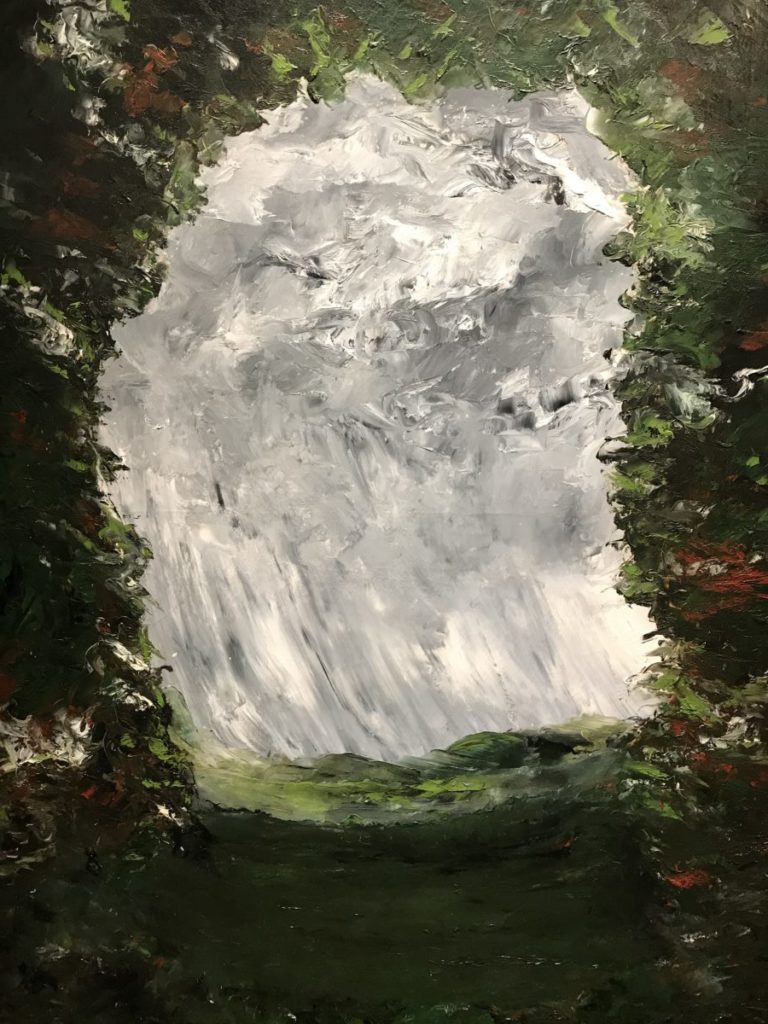
August Strindberg Inferno (1901-1902). Photo: courtesy of Åmells, Stockholm.
ARTIST: August Strindberg
TITLE & DATE: Inferno, 1901-1903
GALLERY: Åmells, Stockholm
PROVENANCE: Private collection
ASKING PRICE: $3.9 million
WHY IT’S GREAT: August Strindberg is known primarily as one of Sweden’s most famous writers and playwrights. A manic depressive who suffered aggressive mood swings, Strindberg turned to painting during episodes of depression and personal upheaval, when words failed to suffice as a means for expressing his inner turmoil. Although his paintings are radically abstract, he viewed them as self portraits, giving an insight into the mind of an often troubled genius.
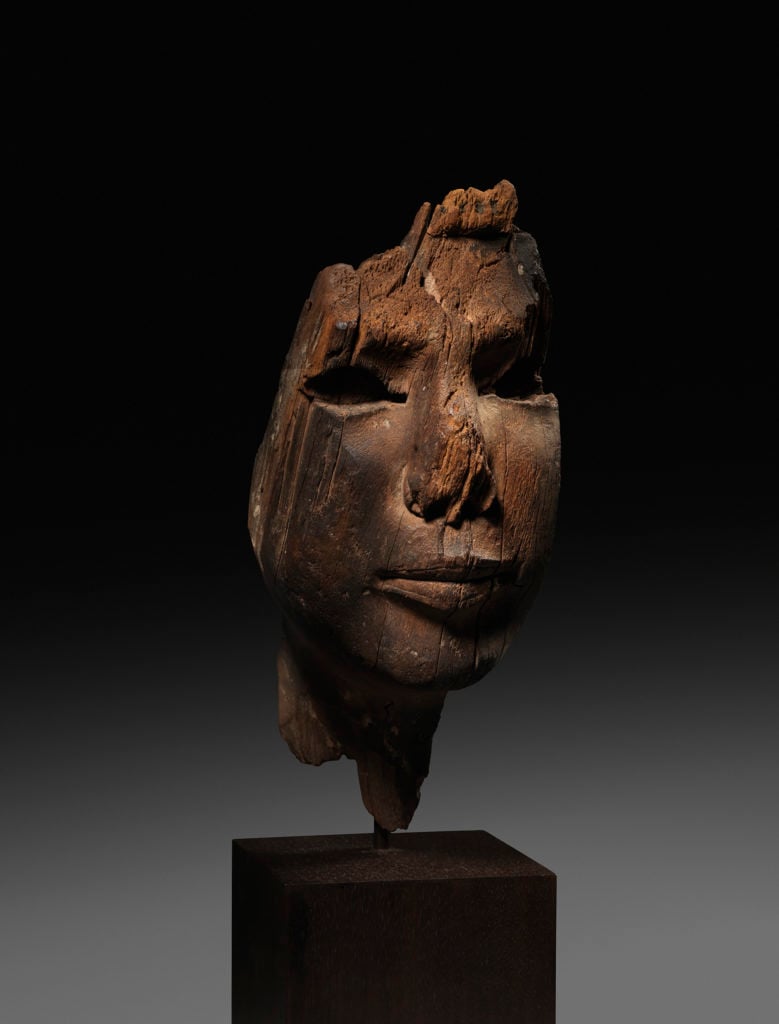
Ancient Egyptian Wood Sculpture Fragment (ca. 1960-1900 B.C.). Photo: courtesy of Rupert Wace Ancient Art, London.
ARTIST: Unknown
TITLE & DATE: Ancient Egyptian Wood Sculpture Fragment, ca. 1960-1900 B.C.
GALLERY: Rupert Wace Ancient Art, London
PROVENANCE: Samuel Scheps, Switzerland
ASKING PRICE: $380,000
WHY IT’S GREAT: This ancient Egyptian fragment is all that remains of what was a life-sized wooden statue of a wealthy Egyptian nobleman. In ancient Egypt, such a statue was a crucial part of a noble burial, guaranteeing access to the afterlife should something happen to the body. The work is characterized by an incredibly high level of craftsmanship, as demonstrated by the crispness of the carved lips. The fragment once belonged to the wealthy Swiss industrial heir Samuel Scheps who risked his life traveling around Nazi Germany and Nazi-occupied countries to arrange emigration opportunities for persecuted Jews, saving countless lives.
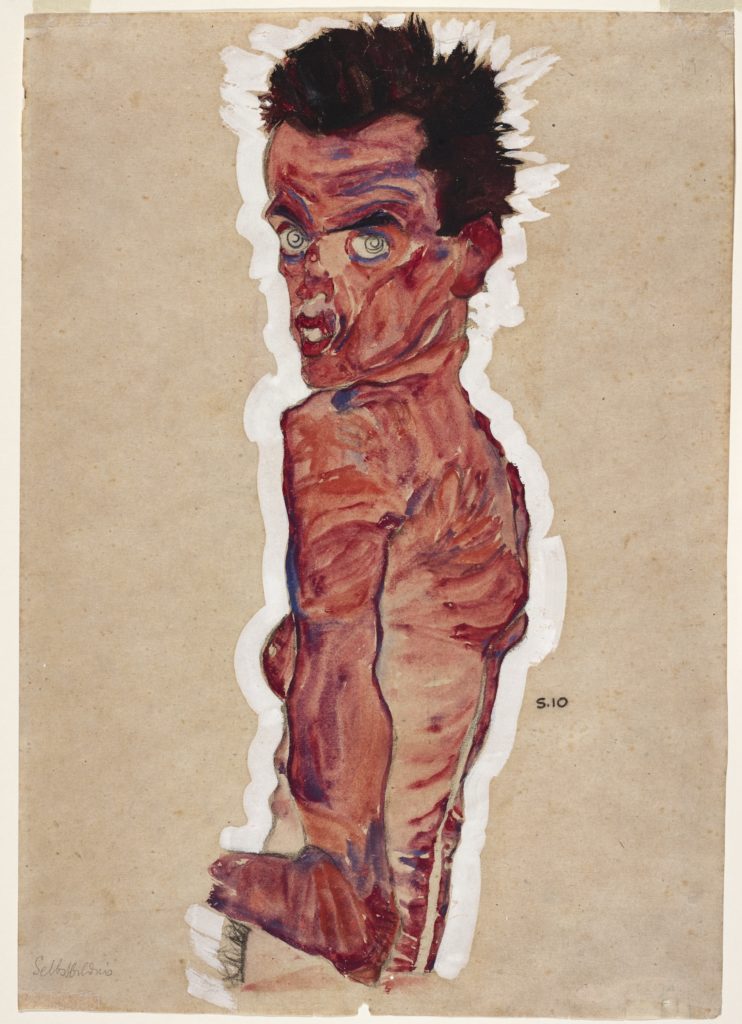
Egon Schiele Self Portrait (1910). Photo: Galerie Sanct Lucas, Vienna.
ARTIST: Egon Schiele
TITLE & DATE: Self Portrait, 1910
GALLERY: Galerie Sanct Lucas, Vienna
PROVENANCE: Private collection, Vienna
ASKING PRICE: $6.5 million
WHY IT’S GREAT: Right at the entrance of the fair, Galerie Sanct Lucas from Vienna is showing a selection of works on paper by Egon Schiele. Of the four works on view by the Austrian artist, Self Portrait is by far the most impressive. The work bears all the hallmarks of Schiele’s gripping style and is rendered with a white ‘aura’ around the figure—a nod to Renaissance depictions of saints and apostles and an attempt by Schiele to sanctify himself. Two similar versions hang in Vienna’s illustrious Albertina Museum; this one comes from a private Viennese collection.
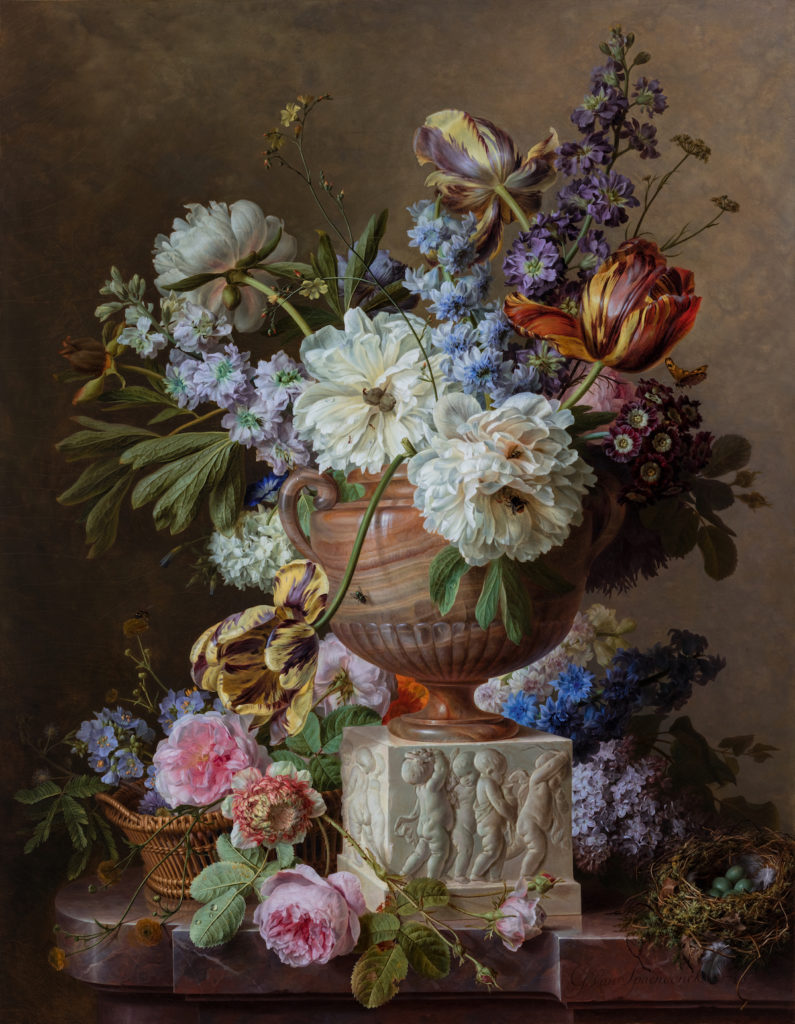
Gerardus van Spaendonck An Oriental alabaster case containing various flowers sitting on a base on which children are depicted in bas-relief (1783). Photo: Talabardon & Gautier, Paris.
ARTIST: Gerard van Spaendonck
TITLE & DATE: Flower painting, 1783
GALLERY: Talabardon & Gautier, Paris
PROVENANCE: Paul Hottinguer (1855-1939), acquired by the former at the beginning of the 20th century, thence by descent.
ASKING PRICE: $1.8 million
WHY IT’S GREAT: Gerard van Spaendonck was a court painter for Louis XVI and was known for his luscious and vibrant still-life paintings of flowers. This work was exhibited at the Parisian printing salon in 1783 where it was received with great critical acclaim. The work embodies van Spaendonck’s unique stylistic approach, blending Dutch still life and 18th century French Rococo.
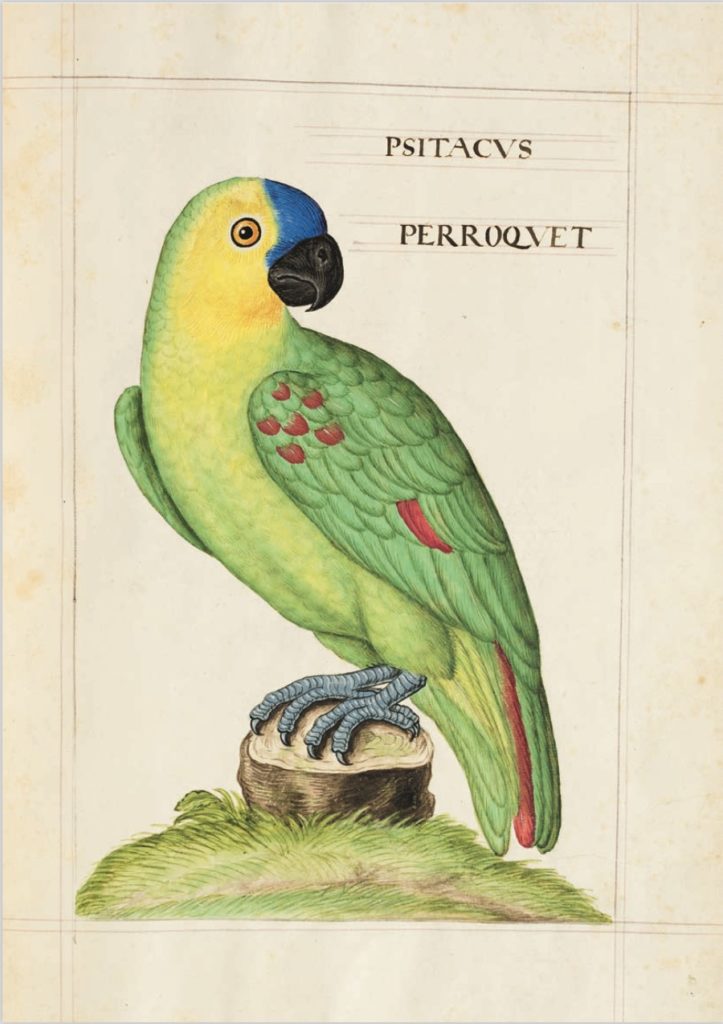
Mid 16th-century French manuscript on birds of prey. Photo: Forum Rare Books, Utrecht.
ARTIST: Unknown
TITLE & DATE: Mid-16th-century manuscript of natural history on birds of prey, ca. 1550-60
GALLERY: Forum Rare Books, Utrecht
PROVENANCE: Library of H.P. Kraus, New York
ASKING PRICE: $3.3 million
WHY IT’S GREAT: This 50-page manuscript is one of the earliest known works of French ornithological drawings and one of the best and most extensive Renaissance bird books. In excellent condition and containing 58 drawings, it shows 14 varieties of birds of prey, including falcons, hawks, eagles, owls, a vulture, and a buzzard, as well as exotic species such as a parrot, parakeet, peacock, and even a bat. With its colorful and incredibly luminescent illustrations of rare and exotic birds, this book would have delighted 16th-century readers. It continues to delight today.